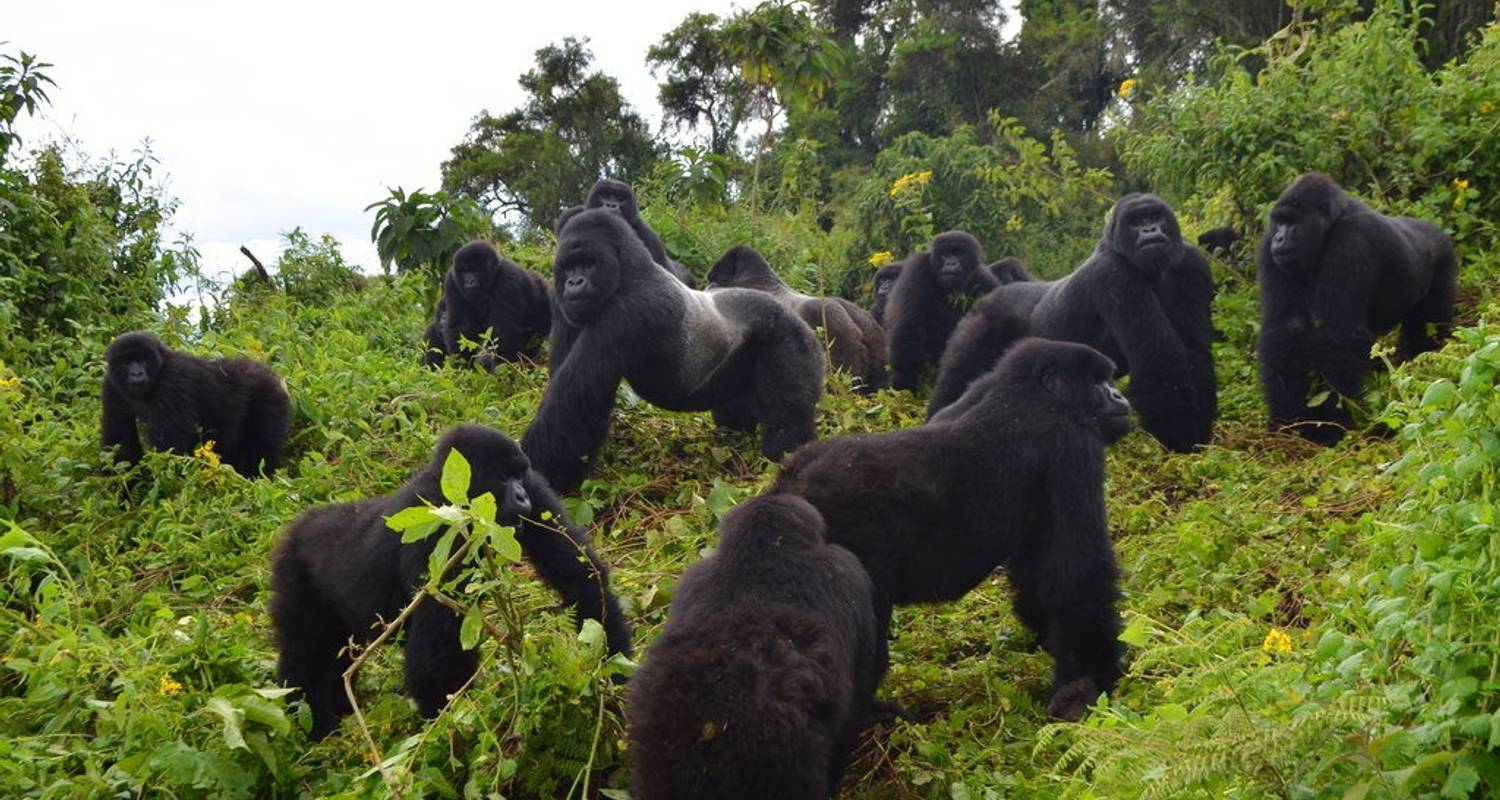Nearly 600 mountain gorillas live in the lush forested slopes of central Africa’s mountains making Africa home to the last surviving mountain gorillas in the world. Due to extensive poaching and deforestation of the different gorilla habitats in Africa, the mountain gorillas have been classified as a critically endangered species that could soon be wiped out on the face of the earth.
Thank you for reading this post, don't forget to subscribe!It was not until 1902 that the mountain gorillas became known to European and the world through several studies of naturalists like George Schaller who studied their behavior for 20 years until 1959 and Dian Fossey during 1960-1970. ‘Gorillas in the Mist’, a diary and best selling book by Dian Fossey further introduced the giant apes to the world. A film in the same name was released in the1980’s based on her works in Congo’s rain forests.
Today, Gorilla conservation efforts are enormous thanks to the growing tourist potential on Gorilla watching in Africa. There are many awareness campaigns and international funding for mountain gorilla conservation which reflects in the raising numbers of gorillas. This implies that the next generation can be proud to find these primates safe in their natural habitat!
Mountain gorillas are found in the mountain ranges on the border of Uganda, DR Congo and Rwanda. Although it is a small area, these giant primates have been able to survive in the thick rainforest of this region for decades and are carefully adapted to this cold weather. The mountain gorillas have a longer and thick coat of fur that the lowland gorillas do not have. There are mainly vegetarian and feed on leaves, wild fruits, stems, vines and some insects like ants from which they get protein nutrients.
The mountain gorillas live in groups, preferably called families of up to 20 members although some have roughly 6-50 members. An adult male often leads the family and is identified by a coat of silver fur that grows on its back at the age of 15. Although the families of gorillas are headed by one sexually mature silverback, the group can have more than one silverback male, 3 females and a pack of juveniles and infants. The female gorillas are identified by the less pronounced crests on their heads. They are often loyal to the dominant male in the group they live in and only give birth to only its offspring.
The gorilla families are diurnal and their trail is 1km every day. They are ever on the move in search of food and this helps preserve their habitat and protect the family against possible threats like poaching by humans and potential predators like leopards that attack the infants and juveniles.
Nevertheless, mountains gorillas are only endangered by increasing human activity like poaching. Poachers are often paid off well for souvenirs of gorilla heads and hands!
Gorilla Expedition or Hiking in Uganda
Many tourists have found the gorilla adventure worth their time and money. Even the elderly have enjoyed the gorilla families in Rwanda and Uganda.
Gorilla Photo Tours
Most of the clients enjoy photographic safaris. We can help you choose the best gorilla family which is good for photo taking. Video coverage is free as long as you have paid for your permit of course, but Mountain gorilla filming costs $ 1000, this is because you are given extra time with the gorillas.
Where to stay?
There are various lodges close to the National parks for all budgets, affordable, mid-range, luxury or even super luxury; it all depends on the cost and what you are likely to spend on. Gorilla Trips to Uganda and Rwanda and gorilla viewing and sightseeing tours.
Africa is blessed to be a home to more than 500,000 gorillas that can be classified into the western lowland gorillas, mountain gorillas and the eastern lowland gorillas. Many of these gorillas live in the forested landscape of Central Africa and weigh approximately 250kg for a fully grown adult. Africa’s largest population of gorillas is the western lowland gorillas that live in the Congo River basin however; the mountain gorillas are more prominent on gorilla safaris in Africa.

